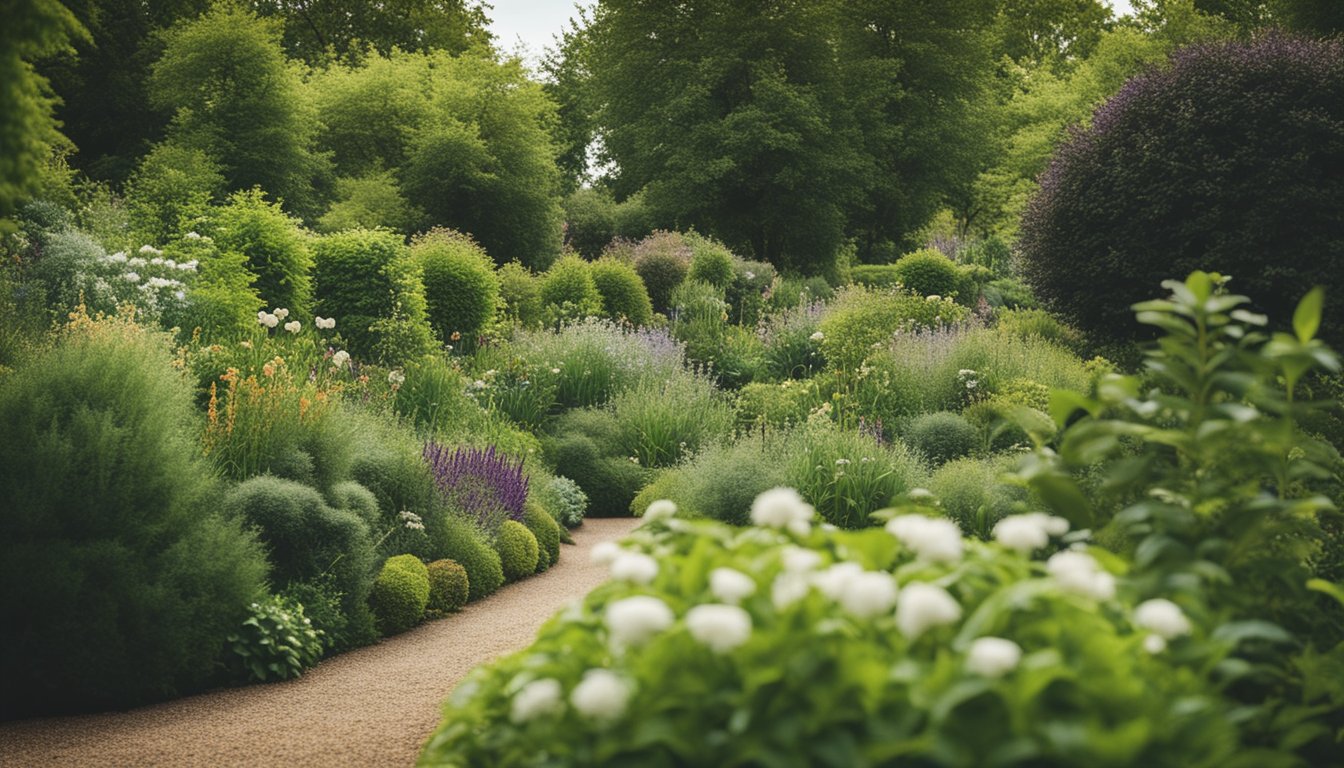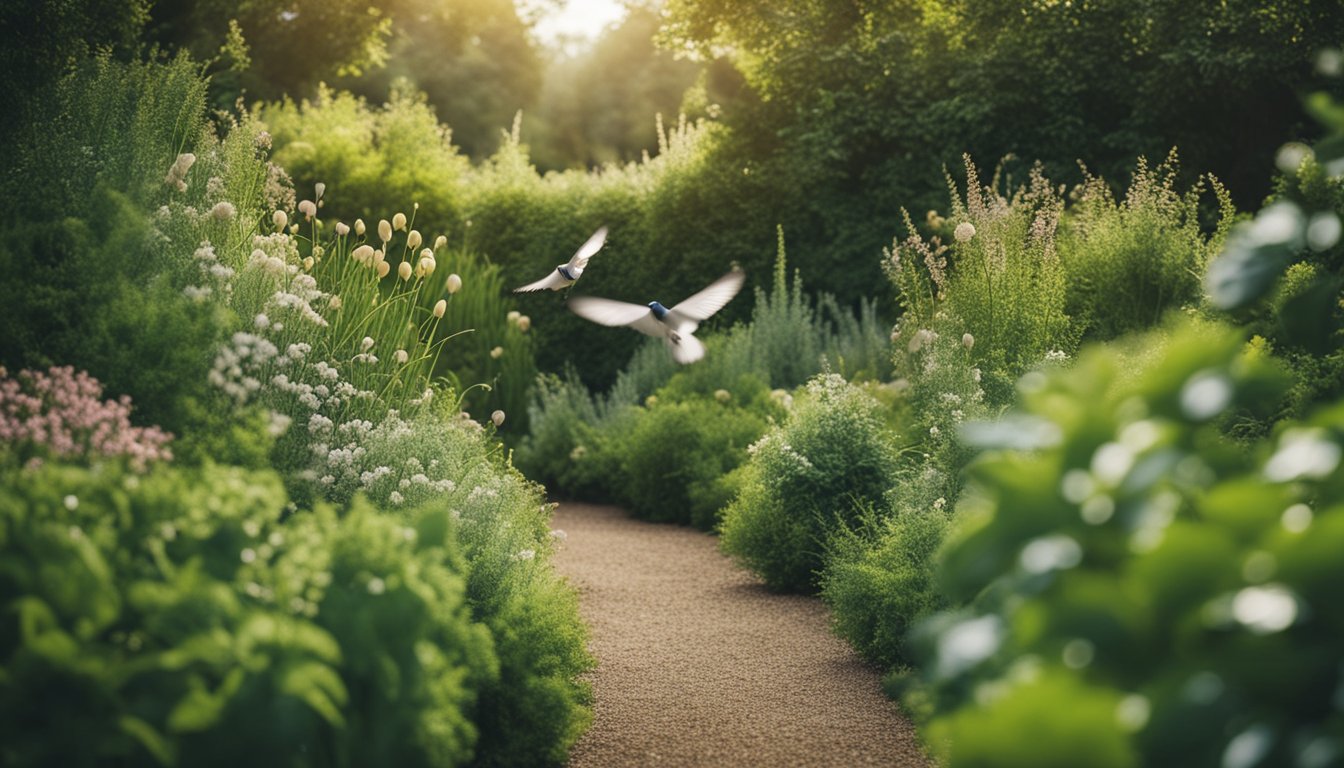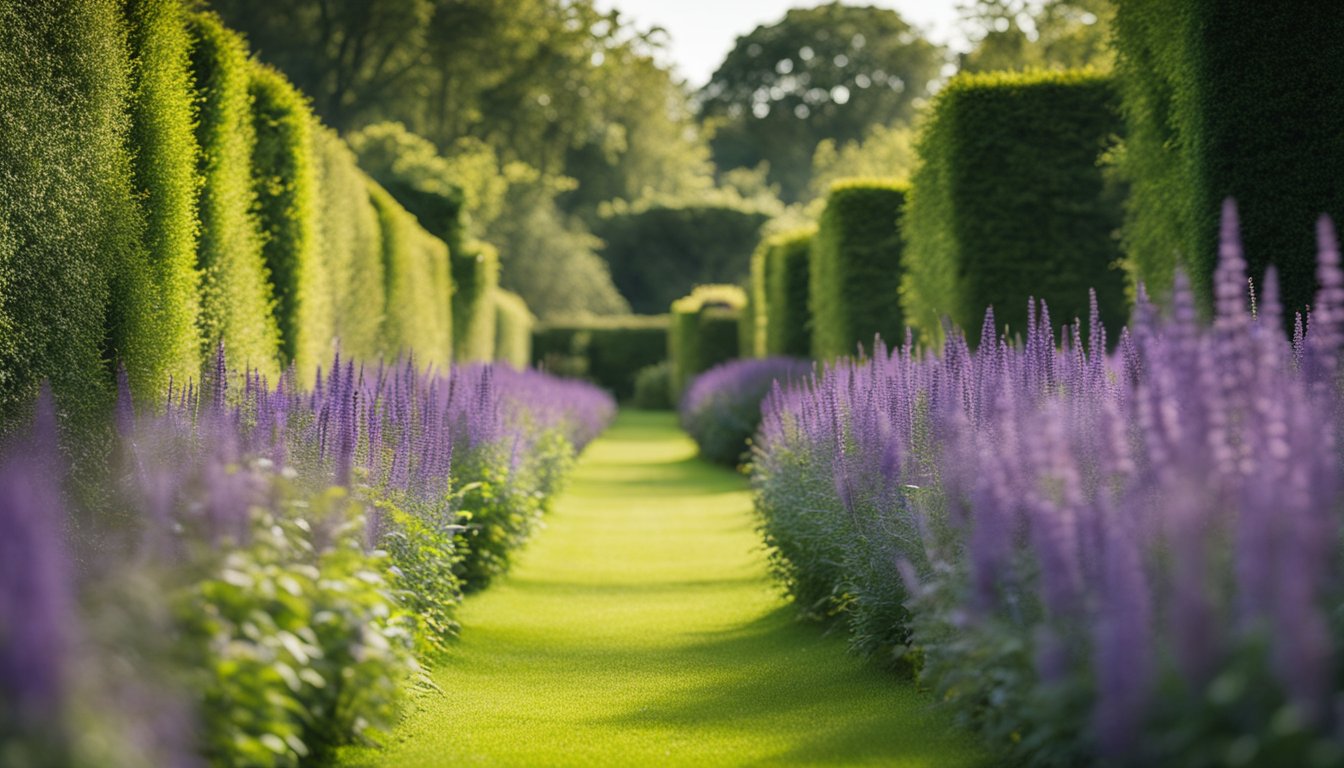Late updated: 03 Nov 2024 10:11
Written by: Emily Thornton
Creating A Wildlife-Friendly Hedge In UK Gardens: Essential Tips and Benefits
Creating a wildlife-friendly hedge in UK gardens is a rewarding way to support biodiversity while enhancing the beauty of our outdoor spaces. By choosing the right plants and understanding their placement, we can create a thriving environment for various creatures. The most effective wildlife hedges combine native species of plants that provide food and shelter to a wide range of birds, insects, and small mammals.

In our journey towards establishing a successful wildlife hedge, it's crucial to consider the layout and plant spacing. By planting in a staggered double row and incorporating a mix of shrubs, we create a diverse habitat that attracts more species. This ensures that our gardens become lively ecosystems, teeming with life throughout the year.
While maintaining these hedges, we must be mindful not to trim during the nesting season to protect birdlife. Paths and spaces within the hedge can also serve as corridors for small mammals, adding another layer of ecological value. Let's dive deeper into the steps necessary to cultivate a flourishing sanctuary right in our gardens.
Key Takeaways
- Native plants are best for a diverse wildlife hedge.
- Plant in staggered rows for better coverage and diversity.
- Avoid trimming during the birds' nesting season.
Planning Your Wildlife-Friendly Hedge
Planning a wildlife-friendly hedge involves selecting native plants that maximise biodiversity and provide food sources for various species. We need to consider how to design the hedge to support local ecosystems effectively.
Choosing the Right Plants
When choosing plants for a wildlife-friendly hedge, prioritising native trees and shrubs is crucial. Native species like hawthorn, blackthorn, and field maple are excellent choices as they thrive in local conditions and are well-suited to supporting native wildlife. Hazel and holly are additional options that offer dense cover.
Incorporating a mix of deciduous and evergreen species can provide year-round appeal and habitat. Selecting plants that vary in height, such as honeysuckle and ivy, adds layers to the hedge structure. This variety offers diverse nesting opportunities and shelter for birds and small mammals.
Designing for Biodiversity
Designing for biodiversity means creating a hedge layout that enhances habitat complexity. By staggering rows, using a combination of species, and varying the density, we can foster a rich wildlife environment. Utilising a staggered double row layout, with about a metre between plants, can help achieve a layered effect.
In our garden design, integrating wildlife-friendly gardens or wildflower meadows nearby can boost the hedge’s effectiveness. Companion planting with species that attract pollinators, like clematis and bird cherry, supports an interconnected ecosystem. This approach not only boosts biodiversity but also encourages healthy plant growth.
Providing Food for Wildlife
A key aspect of planning our hedge is ensuring it serves as a reliable food source. Many native plants offer berries, fruits, seeds, and nuts that sustain various animals throughout the year. For instance, hawthorn and blackthorn produce berries that attract birds, while nuts from hazel are prized by squirrels and other mammals.
Including species such as alder, which produces catkins in early spring, can provide a critical early food source for insects. Additionally, maintaining a mixture of flowering and fruiting species ensures continuous availability of food. This strategy supports a resilient wildlife-friendly garden where different species can thrive at different times.
Establishing and Maintaining Your Hedge

Creating a wildlife-friendly hedge involves careful planning and ongoing maintenance. Mixed native hedges support a range of wildlife, providing food and shelter year-round while enhancing the biodiversity of your outdoor space.
Planting Techniques
Planting the hedge properly sets the foundation for long-term success. We should ideally plant bare-root plants between November and March, avoiding times when the ground is frozen or overly wet. This ensures strong root establishment.
We can use a mix of native species to attract diverse wildlife. A general recommendation is to plant three specimens of the same species per metre, with others mixed in to enhance biodiversity. Integrating flowering plants can also help attract bees and other pollinators.
Preparation of the site is crucial. It's important to dig over the area and remove weeds before planting. Mixing in well-rotted manure or organic matter will improve soil fertility, encouraging healthier growth.
Supporting the Wildlife Ecosystem
To support local wildlife, it's vital to understand the needs of creatures we aim to attract. Pollinators such as bees can be drawn to a variety of flowering shrubs. This not only aids biodiversity but helps in plant pollination across the garden.
Hedgehogs, small mammals, and even amphibians can find a home in a well-structured hedge. Including a hedgehog house or a dead hedge—a structure made from trimmed woody materials—could provide ideal habitats.
Selecting plants that fruit will offer food for nesting birds during colder months. Maintaining a balance between cutting back for shape and allowing plants to flower and fruit is essential in fostering a welcoming habitat.
Structural Diversity and Creating Habitats
The structure of the hedge influences its effectiveness as a habitat. A hedge shaped like an 'A'—thicker at the base and tapering towards the top—maximises light penetration to the ground, encouraging growth of ground flora.
In our hedges, including varying species can facilitate different layers and textures. This supports diverse insects and provides areas for birds to nest and mammals to hide.
Woody cuttings and trimmings can be recycled into a 'dead hedge,' which acts as an excellent shelter for wildlife while deterring larger pests. Incorporating climbers around the hedge not only increases structural complexity but also enhances aesthetic appeal, contributing further to the allure of our garden.
Frequently Asked Questions

Creating a wildlife-friendly hedge enhances biodiversity, supports bird populations, and can be low maintenance. Selecting the right plants and design is key.
What are the best plants to include in a wildlife-friendly hedge in the UK?
To foster a thriving ecosystem, consider using native species like hawthorn, blackthorn, hazel, and elder. These plants provide essential food and shelter for a variety of creatures. Their fruits, flowers, and dense foliage serve as vital resources throughout different seasons.
How can I create a low maintenance hedge that attracts wildlife?
Choose hardy, disease-resistant species that naturally thrive in local conditions. Incorporating plants like dogwood and field maple can reduce the need for frequent care. Avoid trimming during nesting seasons, and allow some parts to grow freely to maximise wildlife cover and habitat diversity.
What are the top evergreen hedges for supporting bird populations?
Evergreen species such as yew, holly, and box provide year-round shelter and nesting sites. Their dense foliage is ideal for protecting birds against predators and harsh weather. Additionally, these plants offer food sources like berries, which are crucial during the colder months.
How should I approach wild garden landscaping to promote local biodiversity?
Strive for a mix of plant types, including ground cover, shrubs, and trees. This variety creates layered habitats suitable for different species. Minimise the use of chemicals to encourage natural predators and pollinators. Consider installing features like logs and stones to offer additional wildlife habitats.
Which native UK hedges are suitable for small gardens?
For compact spaces, consider planting smaller species such as spindle, wild privet, or dwarf hawthorn. These plants offer the biodiversity benefits of larger hedges without overwhelming limited garden areas. Their moderate growth makes them ideal for maintaining privacy and wildlife attraction simultaneously.
How do I ensure my hedge planting adheres to UK boundary regulations?
We need to respect local planning rules, which may dictate the height and type of hedges permitted along property boundaries. Check with local authorities or council guidelines to prevent disputes. Maintaining a reasonable height and trimming back encroaching branches can help ensure harmony with neighbours.
